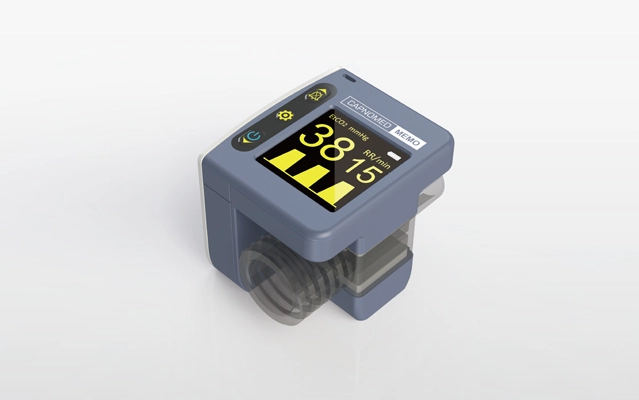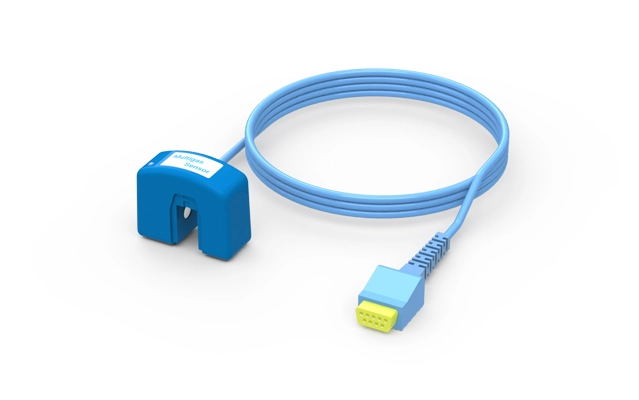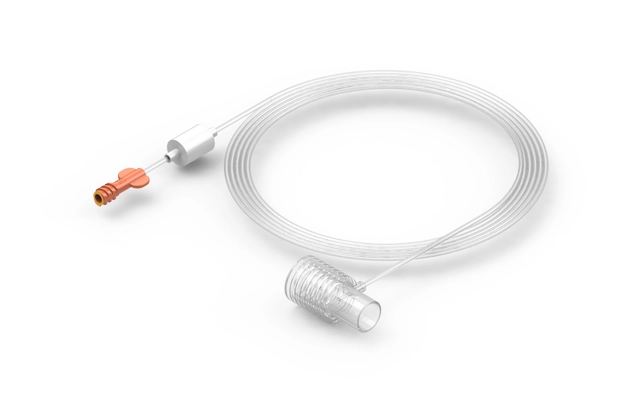When it comes to monitoring patients' respiratory status, capnography and end-tidal CO2 are two critical tools used by healthcare professionals. Though they are closely related, understanding their differences can significantly impact patient care. Let's dive into what makes these methods unique and how they are applied in clinical settings.
Basics of Capnography
Definition and Purpose
Capnography is a non-invasive method that measures the concentration of carbon dioxide (CO2) in exhaled air. It provides real-time feedback on a patient’s ventilation status, making it invaluable for continuous monitoring.
How Capnography Works
Capnography works by analyzing the amount of CO2 in the air that a patient exhales. This measurement is typically represented as a waveform on a monitor, known as a capnogram. The shape of this waveform can give insights into the patient's respiratory patterns.
Types of Capnography Devices
Capnography devices come in various forms, including handheld units, portable monitors, and devices integrated into anesthesia machines. Each type has specific features suited for different clinical scenarios.
Basics of End-Tidal CO2
End-Tidal CO2 Definition and Purpose
End-Tidal CO2 (ETCO2) refers to the concentration of carbon dioxide in the breath at the end of exhalation. It is a specific measurement derived from capnography and reflects the CO2 level in the alveoli, where gas exchange occurs.
How to Measure End Tidal CO2?
End-Tidal CO2 is measured using capnometers that analyze exhaled air. The measurement is often displayed as a numerical value alongside a waveform, providing both quantitative and qualitative data.
Devices Used for Measuring End-Tidal CO2
Devices for measuring End-Tidal CO2 include portable monitors, capnometers, and advanced anesthesia machines. These devices are designed to provide precise measurements of CO2 at the end of exhalation.
Capnography vs End-Tidal CO2: Key Differences
Measurement Focus
While capnography provides a continuous waveform of CO2 levels throughout the breathing cycle, end-tidal CO2 focuses specifically on the CO2 concentration at the end of exhalation. This distinction makes capnography more comprehensive in assessing overall ventilation, whereas end-tidal CO2 provides a snapshot of the patient's respiratory status.
Clinical Applications
Capnography is widely used for monitoring during anesthesia and in critical care settings due to its continuous monitoring capability. In contrast, end-tidal CO2 measurements are often employed to assess ventilation efficiency and guide interventions such as intubation.
Accuracy and Reliability
Capnography offers real-time feedback and is generally reliable for continuous monitoring. However, its accuracy can be affected by factors such as equipment calibration and patient movement. End-tidal CO2 measurements are highly precise but can vary depending on the calibration and the presence of respiratory disorders.
Clinical Applications of Capnography
Monitoring During Anesthesia
Capnography is essential for monitoring patients under anesthesia, allowing clinicians to detect changes in ventilation and ensure proper gas exchange throughout the surgical procedure.
Detecting Respiratory Issues
In emergency settings, capnography helps in identifying respiratory issues such as hypoventilation or airway obstruction, providing critical information for timely interventions.
Use in Critical Care
Capnography is used in intensive care units (ICUs) to continuously monitor patients' ventilation status, helping in the management of respiratory conditions and guiding treatment decisions.
Clinical Applications of End-Tidal CO2
Assessing Ventilation Efficiency
End-tidal CO2 measurements are crucial for assessing the efficiency of ventilation. Accurate readings help in evaluating the effectiveness of mechanical ventilation and adjusting settings as needed.
Guiding Intubation and Extubation
During procedures involving intubation or extubation, end-tidal CO2 measurements provide real-time feedback on the placement of the endotracheal tube and the patient’s respiratory status.
Monitoring COPD Patients
For patients with chronic obstructive pulmonary disease (COPD), end-tidal CO2 measurements assist in monitoring their condition and adjusting treatment to manage CO2 levels effectively.
Technology Behind Capnography
Infrared Absorption
Most capnography devices use infrared absorption technology to measure CO2 levels. This method involves passing infrared light through a sample of exhaled air and detecting the amount absorbed by CO2 molecules.
Capnometers vs. Pulse Oximeters
While capnometers measure CO2 levels, pulse oximeters measure oxygen saturation. Both devices provide valuable information but focus on different aspects of respiratory function.
Data Interpretation
The data from capnography is presented as a waveform and numerical value, providing insights into the patient's breathing pattern and CO2 levels. Understanding these readings is crucial for accurate diagnosis and treatment.
Technology Behind End-Tidal CO2 Measurement
Chemical Sensors
End-tidal CO2 measurement often relies on chemical sensors that react with CO2 in exhaled air. These sensors provide precise measurements of CO2 levels at the end of exhalation.
Capnometers Specific to End-Tidal CO2
Capnometers designed for end-tidal CO2 measurement offer high accuracy and are essential in both clinical and emergency settings. These devices are calibrated to provide precise readings of CO2 concentration.
Integration with Other Monitors
End-tidal CO2 measurements are frequently integrated with other monitoring systems, such as those measuring heart rate and oxygen saturation. This integration provides a comprehensive view of the patient's respiratory and overall health.
Advantages of Capnography
Continuous Monitoring
Capnography provides continuous monitoring of a patient’s ventilation status, allowing for real-time detection of changes and immediate response to respiratory issues.
Real-Time Feedback
The real-time feedback offered by capnography is crucial for managing patients under anesthesia and in critical care settings. It helps in making informed decisions quickly.
Versatility in Various Settings
Capnography devices are versatile and can be used in a range of clinical settings, including emergency rooms, operating rooms, and intensive care units.
Advantages of End-Tidal CO2 Measurement
Precision in Measurement
End-tidal CO2 measurement provides precise readings of CO2 levels, making it a valuable tool for assessing ventilation efficiency and guiding treatment.
Simplicity of Use
End-tidal CO2 measurement devices are often straightforward to use and require minimal training, making them accessible for various clinical applications.
Cost-Effectiveness
Compared to some other monitoring technologies, end-tidal CO2 measurement devices are relatively cost-effective, providing accurate data without significant expense.
Limitations of Capnography
Potential for False Readings
Capnography can be susceptible to false readings due to factors such as patient movement or equipment calibration issues. Ensuring proper calibration and placement is crucial.
Equipment Sensitivity
The sensitivity of capnography equipment can affect accuracy. Regular maintenance and calibration are necessary to maintain reliable measurements.
User Error
User error can impact the effectiveness of capnography. Proper training and understanding of the device’s operation are essential for accurate monitoring.
Limitations of End-Tidal CO2 Measurement
Invasive Techniques
Some end-tidal CO2 measurement techniques can be invasive, which may be a limitation in certain clinical scenarios. Minimizing invasiveness while ensuring accuracy is a key consideration.
Variability in Readings
End-tidal CO2 readings can vary depending on factors such as patient condition and device calibration. Regular checks and adjustments are necessary to ensure accuracy.
Need for Calibration
End-tidal CO2 measurement devices require periodic calibration to maintain accuracy. Regular maintenance is essential for reliable readings.
| Feature | Capnography | End-Tidal CO2 |
| Measurement Focus | Continuous waveform of CO2 levels throughout the breathing cycle | CO2 concentration at the end of exhalation |
| Clinical Applications | Anesthesia monitoring, Critical care, Detecting respiratory issues | Assessing ventilation efficiency, Guiding intubation/extubation, Monitoring COPD |
| Accuracy & Reliability | Real-time feedback, Can be affected by factors like calibration and patient movement | Highly precise, Can vary based on calibration and respiratory disorders |
| Technology | Infrared absorption | Chemical sensors |
| Advantages | Continuous monitoring, Real-time feedback, Versatility | Precision, Simplicity of use, Cost-effectiveness |
| Limitations | Potential for false readings, Equipment sensitivity, User error | Invasive techniques (some methods), Variability in readings, Need for calibration |
Choosing the Right Tool for Your Needs
Factors to Consider
When choosing between capnography and end-tidal CO2 measurement, consider factors such as the clinical setting, patient condition, and specific monitoring needs.
Comparing Features
Compare the features of different devices, including accuracy, ease of use, and integration with other monitoring systems. Selecting a device that meets your requirements is essential for effective patient care.
Cost and Maintenance
Evaluate the cost and maintenance requirements of each device. While cost is a factor, ensuring that the device provides reliable and accurate measurements is paramount.
Conclusion
In summary, both capnography and end-tidal CO2 measurement play crucial roles in monitoring respiratory function and guiding treatment. Understanding their differences and applications helps healthcare professionals make informed decisions about patient care. Whether you need continuous monitoring or precise measurements, these tools offer valuable insights into respiratory health.
 English
English










